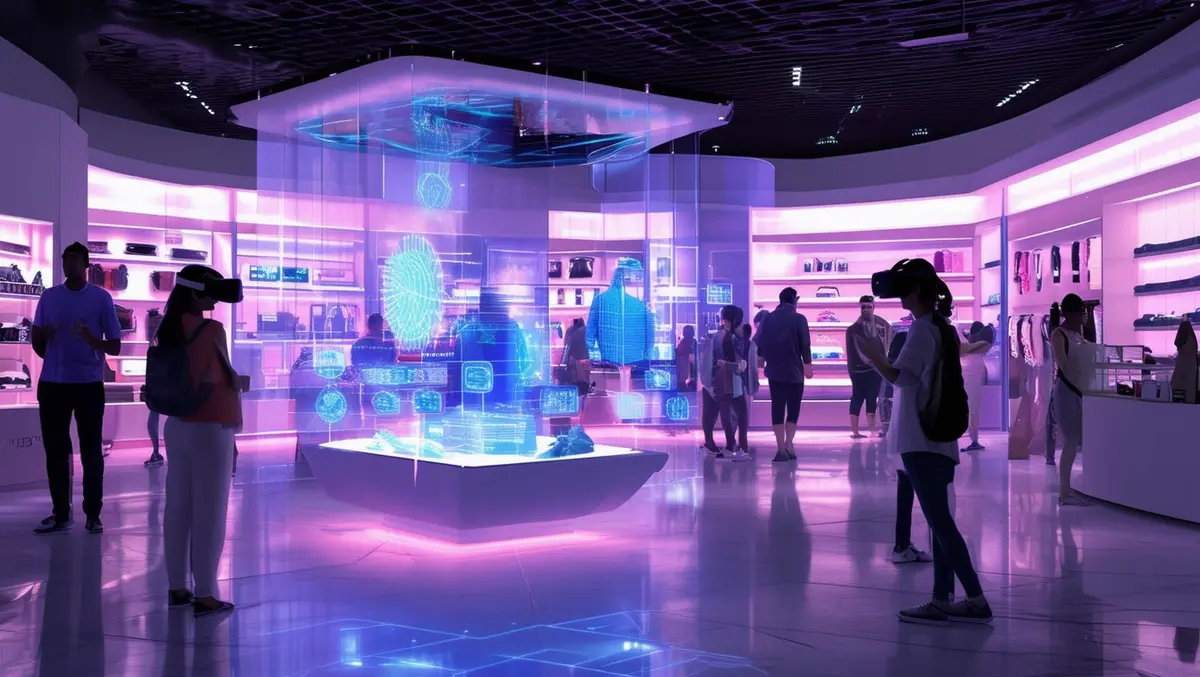Businesses are looking for increasingly innovative ways to capture consumer attention amid a continuously noisy environment. The emerging trend of immersive phygital experiences—an amalgamation of physical and digital interactions—is being hailed as a significant development in customer engagement. HYPERVSN's Phygital Lab has identified five trends set to shape the future of these immersive experiences.
The first trend is enhanced realism. Advances in holographic visuals are yielding higher display resolutions, greater detail, and more vivid colours. This progression could soon lead to photorealistic holograms, which will be nearly indistinguishable from real-world objects or people. Applications in the retail sector could see these lifelike holograms used for point-of-sale displays, visual merchandising, product launches, and trade events.
Secondly, interactivity is becoming a critical component. Sensory and gesture motion controls are being integrated into holographic systems, allowing users to interact with 3D visuals in unprecedented ways. This interactive technology could be especially transformative in healthcare and engineering, where the ability to manipulate and engage with detailed holographic visuals can enhance understanding and operational efficiency.
Artificial intelligence is another area poised to redefine customer experiences. The integration of AI in the 3D holographic sector can lead to personalised retail experiences featuring holographic avatars activated by smartphone apps. These engaging avatars could present tailored promotions and services, thereby boosting sales and brand loyalty.
The fourth insight from HYPERVSN's research highlights new applications in various fields. Sophisticated holographic tech has the potential for detailed medical simulations, including neurosurgery and cardiovascular imaging. Meanwhile, the gaming industry could see the advent of immersive experiences that incorporate cooperative multiplayer environments within elaborate, virtual worlds.
Finally, collaborative technological development is expected to play a significant role. Standardising immersive technologies will be crucial in fostering innovation and partnerships. Consistent standards will allow developers to create intelligent applications that are universally compatible, thereby accelerating industry growth.
Tony Madden, Head of Phygital Lab at HYPERVSN, commented on these developments: "It's an exciting time for the 3D holographic industry, and HYPERVSN is at the forefront of innovation in immersive experiences. We're not just going to see holographic deployments become more realistic, but integration with other emerging solutions will also help take them to the next level. It's now up to companies to work together to define the standards that will push these immersive experiences forward and resonate with audiences."
The insights outlined in HYPERVSN's new playbook also delve into practical applications of immersive engagement across various sectors. For instance, Nike collaborated with HYPERVSN to boost store footfall through vivid holographic displays. Additionally, HYPERVSN created a 3D wall for Hyundai Motor Group, enhancing its presence at the Seoul Motor Show.
To further explore these trends, HYPERVSN is set to host a webinar later this month focusing on 'The Future of Retail' and how 3D holography is transforming customer engagement.



